Better together?
- Details
 As legal departments suffer severe cuts to their resources, the role of consortia in creating value for their members is more important than ever. Derek Bedlow asks the leaders of the North West Legal Consortium how they are going about ensuring their organisation is greater than the sum of its parts
As legal departments suffer severe cuts to their resources, the role of consortia in creating value for their members is more important than ever. Derek Bedlow asks the leaders of the North West Legal Consortium how they are going about ensuring their organisation is greater than the sum of its parts
Although the North-West Legal Consortium (NWLC) has its roots in a joint procurement exercise involving four Merseyside local authorities, led by Sefton Council, in 2006, the NWLC was established in its present guise in 2010. This followed a joint tender process for solicitors and barristers which resulted in a range of panels comprised of 31 law firms across 11 panels as well as 14 panels containing 26 sets of barristers chambers.
From the outset, the NWLC aimed to go further than most consortia by encouraging its member authorities – initially 25 in number, but now 35 strong (making it the largest in the country after EM LawShare in the East Midlands) – not only to band together to reduce the cost of their external legal advice, but also to create an organisation that could create positive value for its members as well as save money.
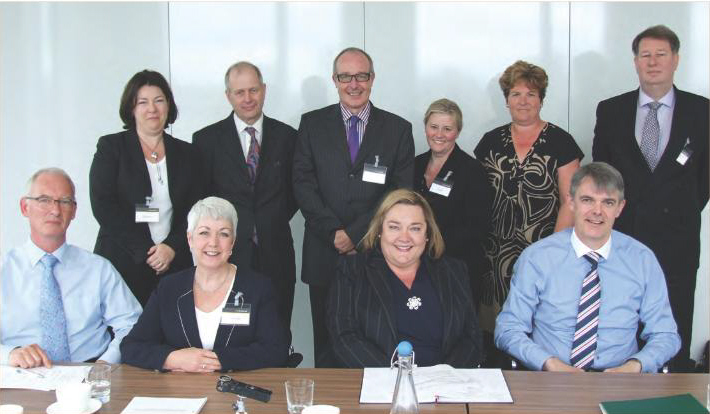 The aim of the much-expanded consortium in 2010 was to achieve this through promoting greater co-operation between its members – primarily through a new interactive website – and to get more than just discounts from their legal providers.
The aim of the much-expanded consortium in 2010 was to achieve this through promoting greater co-operation between its members – primarily through a new interactive website – and to get more than just discounts from their legal providers.
One key to this was the establishment of a two-tier solicitors panel which saw four firms – DAC Beachcroft, DLA Piper, Pannone and Weightmans – given ‘partner’ status in return for the provision of additional services to consortium members, including secondments and PR support as well as the provision of a substantial training programme for member authorities.
The input of the partner firms also includes technical support for the consortium’s website, an interactive tool aimed at enabling member authorities to share knowledge and work more closely together.
Through the appointment of the partner law firms, the consortium also sought to address the weaknesses of the traditional ‘arms length’ relationships that exist between many public sector clients and their legal advisers, in which the inevitable lack of familiarity of the latter with their clients’ working practices, cultures, pressures and objectives makes it much more difficult for the advice provided to fully hit the spot.
To ensure a more efficient working relationship between law firm and client, the trend in recent years in the commercial sector has been for companies to concentrate their instructions on fewer firms. It is this intangible added value that these relationships can create that the appointment of the four partner firms is intended to achieve.
Time together
So, three years on from the creation of the consortium, to what extent have the NWLC’s aims been achieved?
First and foremost, all agree that the panel has had a beneficial effect on the cost of purchasing legal services. Moreover, in terms of getting greater value from this expenditure through closer working relationships between councils and their external advisers, both sides of the equation view the effect very positively.
“Clearly for the constituent authorities, the consortium has had a beneficial effect upon costs, but it has also had a beneficial effect in terms of the quality of the services we receive,” says Burnley Council’s David Wilcock. “Getting to know the different players in the private firms and their perspectives, and building up good, sound working relations between the firms and key players in the authorities is proving to be a real benefit.”
Jill Coule of Sefton Council agrees. “How one council goes about business can be very different from how another council goes about it,” she says. “I think it is fair to say that the relationships with the partner firms do bring benefits to the advice that you receive, because they have an understanding of what your council is about, how your department works and also how the individual fee-earners work.
“By establishing these relationships through the NWLC panel process, there is a bit of comfort that we are not doing something we shouldn’t be doing in having those relationships with the firms, because it has gone through a proper process.”
Similar sentiments come from the perspective of the partner law firms. “From the private firm perspective, I think some of the anxieties that the authorities would have about getting too close in a commercial relationship are abated by the fact that it has been pre-tendered, the rates are already there and have been accepted,” Nicholas Dobson, consultant to Pannone, says. “This enables you to cut to the chase of what is actually required and have the liberty to have a conversation so it can be properly contextualised – so when the bids go in on a mini-tender, they are hitting the right target.”
For Weightmans, Graeme Creer adds that the proactivity of the consortium has enabled the partner law firms involved to get value out of the arrangement beyond simply increasing their fee income.
He says: “We are on a number of consortium panels, but this is one of the more active and I think one of the most successful in terms of activity. We said at the beginning that we, as partner firms, really want this to be an opportunity for you to share the immense knowledge that is within all the local authorities and to combine that with the knowledge that is within the four partner firms.
“You can then tap into this fantastic legal knowledge base and do so easily, whether you are doing it by just informal collaboration, just phoning somebody up, whether you are procuring work, whether you are obtaining advice or whether it is through a training exercise or a conference or whatever it may be. We think that has worked well.”
Buying together
One reason for this, according to the management committee, is the role of the consortium’s website. This acts as a conduit for instructions and enables mini-tenders to be run from member authorities. Framework rates are published on the site, and a streamlined process enables instructions to be agreed much more quickly than through traditional methods.
“The commissioning process is a great administrative saving as well,” says Jill Coule. “You can commission legal advice or give a quote to your client department as to what you think the estimates of legal work are going to be so quickly, because you have got the rates there in front of you. When you go on to commission you can just give a short précis of what you need. That saves lots of time.”
The speed of commissioning works both ways, says Eve Gregory of another partner firm, DAC Beachcroft. “The responses that we are giving are more focused – you are not having to spend so much time in responding to all the questions that you would otherwise have to respond to if it was a standalone procurement, you are going straight to the issue.”
She adds: “An advantage of partnering with a large firm is the access to broad ranging specialisms and capacity that may not be available in house, as part of a seamless team working jointly with local authority lawyers, thereby offering good value for money.”
The website also acts as an information hub for both the consortium authorities and panel firms alike, enabling both local authority and private practice lawyers to exchange documents, book on to training opportunities and to see profiles of both law firm fee-earners and local authority legal teams.
The role of the website in creating a better flow of communication, according to Brian Gibson, (formerly of Sefton Council) has come about as a direct consequence of the experience both sides gained from the 2006 incarnation of the consortium.
“I think one of the lessons that we have learned from the first procurement exercise in 2006, was communication. When we had four local authorities, the consortium was familiar to those at a fairly high level, but it didn’t get down to the fee-earners on the ground,” he says.
“One of the reasons we started off the development of the website was to be able to communicate with fee-earners. It then developed from a straightforward website to becoming a procurement hub and that has helped the consortium move on a lot quicker because we were not only able to commission through the website, but also because we can use it to promote training and to provide online forums to fee-earners at all levels, which wasn’t happening in the original set up.”
Learning together
The final added value benefit provided by the partner firms – training – is the one that appears most valued by the local authorities in the NWLC. Each of the partner firms supports and organises an annual training day each year for all members of the consortium as well as providing a programme of specific training sessions throughout the year.
“Member authorities have seen a reduction in their training budgets because the training is provided free,” says Jayne Hammond from Bury Council. “I know from my own council that what we can spend on training is a fraction of what I would have had two or three years ago for the number of qualified lawyers that I have because I know that I can rely on the consortium to deliver the CPD that staff need. It is a structured programme so you know what is coming up, it is agreed in advanced so you can trail it with the staff and make sure they are aware of it.”
Working together
One of the clear achievements of the NWLC is the extent to which the consortium has succeeded in getting the partner firms to work together in providing training and other benefits, something that many large commercial organisations have failed to do with their panels in the past. The value-added services are provided on a rotating basis, with each of the partner firms taking it in turns to supply one of the four key areas of support services each year.
“We set out by saying to the potential partner firms: we know you are in commercial competition as firms but we don’t really want that to be apparent in terms of the added value,” Jayne Hammond says. “In part, we have achieved that by working together in the steering group [which consists of partner firm representatives and consortium members and meets every three months], which has enabled us all to move forward together and collaboratively.”
The NWLC’s steering group is also quick to acknowledge the advantage of appointing a permanent development manager for the consortium, Beryl Heath, the former head of legal at Knowsley Council.
“Beryl’s role is vital,” Weightmans’ Graeme Creer says. “From her experience of operating within the sector she understands the dynamic and is able to bring the consortium together in a cohesive way. It is very important to have a stable presence within the heart of the organisation. If it was just left to a diffuse collection of authorities, it just wouldn’t happen, you need someone to knock heads together and get things moving.”
So far, so good?
While it is clear that many aspects of the consortium are working well, events have moved apace since the consortium was expanded in 2010. Firstly, budget constraints and the lack of big regeneration and infrastructure projects being launched by local authorities, have inevitably meant that the flow of work to external lawyers is much less than was originally anticipated.
The launch of the NWLC coincided with the Comprehensive Spending Review and some of the most severe cuts in local government funding in living memory. This fell particularly hard on the type of capital and infrastructure projects most likely to be outsourced to law firms. While no guarantees of work were made when the panels were created, levels of work outsourced by members of the consortium have inevitably fallen below initial expectations.
Consequently, the cost of supplying the value-added services has, as at least one of the firms involved admitted, exceeded expectations while the volume of work provided by the consortium has, thus far, done the opposite. Nevertheless, the consortium’s partner firms remain sanguine about the situation.
“This isn’t a short term thing,” says Kate Creer of DLA Piper. “Of course we would always like more work but I think there is a realism about the fact, in terms of the timing of the consortium, that we have hit the worst economic period for a long time and we understand that there aren’t the big projects around at the moment.
“Times are tough for everyone and I think we have managed to just get on and deal with it because we are in it for the long term, we want to make those relationships work and then hopefully when things turn up again, we will all be able to forge forward with a really good shared understanding and background.”
The other accelerating trend since 2010 has been the growth of the shared services agenda and the ever-growing need for local authorities to work more closely together.
While limiting the number of partner firms on the NWLC has clearly had its benefits in terms of creating deeper relationships, in the other direction, the consortium has continued to grow in size, from 25 in 2010 to 35 at the time of writing and is still open to new joiners.
The expansion of the consortium is in contrast to some other consortia such as the London Boroughs Legal Alliance (LBLA), which has deliberately limited the size of its membership in order to encourage greater co-operation and joint working between member authorities.
While the website is continuing to be developed into a more collaborative tool, the present remit of the consortium does not envisage becoming more integrated along similar lines as the LBLA or the Public Law Partnership centred on Essex County Council, which have work sharing arrangements in place, as well as jointly procuring legal services and training. Indeed, the flexibility of the NWLC structure, its board says, could comfortably accommodate the creation of shared services teams between its member authorities if that were to happen.
However, whether that position changes when the current agreement expires in 2014 is currently under consideration and nothing is ruled out.
“I don’t think we have realised all of our potential yet,” says Jill Coule. “I think that is something that we are beginning to realise and this is exciting and something we want to address in the coming months.”
Solicitor - Litigation
Antisocial Behaviour Legal Officer
Legal Adviser
Contracts Lawyer
Lawyer (Planning and Regulatory)
Solicitor/Lawyer (Contracts and Procurement)
Governance Lawyer
Legal Director - Government and Public Sector
Regulatory/Litigation Lawyer
Deputy Director Legal and Democratic Services
Locum roles
 Masterclass – MCA and Court of Protection - Legal Update - Peter Edwards Law Training
Masterclass – MCA and Court of Protection - Legal Update - Peter Edwards Law Training
21-01-2026
Online (live)
 Managing settlements: the legal and practical issues, and the pitfalls to avoid - Blake Morgan
Managing settlements: the legal and practical issues, and the pitfalls to avoid - Blake Morgan
22-01-2026 10:00 am
Online (live)
 Children and Young People (DoL, Competency and Capacity) - Peter Edwards Law Training
Children and Young People (DoL, Competency and Capacity) - Peter Edwards Law Training
28-01-2026
Online (live)
 HMPL Building Blocks: Legal Tools to Combat Anti-Social Behaviour - Devonshires
HMPL Building Blocks: Legal Tools to Combat Anti-Social Behaviour - Devonshires
17-02-2026
Online (live)
 Freedom of thought, belief and religion: Article 9 ECHR - Francis Taylor Building
Freedom of thought, belief and religion: Article 9 ECHR - Francis Taylor Building
19-02-2026
Online (live)
 Grappling with S73 - variations of conditions applications or appeals - Ivy Legal
Grappling with S73 - variations of conditions applications or appeals - Ivy Legal
09-03-2026
Online (live)
 HMPL Building Blocks: Tenancy Management – Assignment, Mutual Exchange and Succession - Devonshires
HMPL Building Blocks: Tenancy Management – Assignment, Mutual Exchange and Succession - Devonshires
12-03-2026
Online (live)
 Section 31(2A) Senior Courts Act: where have we got to? - Francis Taylor Building
Section 31(2A) Senior Courts Act: where have we got to? - Francis Taylor Building
18-03-2026 1:00 pm
Online (live)
 Save the Date: The Law of Public Rights of Way, Commons and Town or Village Greens Seminar (Hybrid) - Francis Taylor Building
Save the Date: The Law of Public Rights of Way, Commons and Town or Village Greens Seminar (Hybrid) - Francis Taylor Building
25-03-2026
London
 HMPL Building Blocks: A Housing Officer’s Guide to Court Proceedings - Devonshires
HMPL Building Blocks: A Housing Officer’s Guide to Court Proceedings - Devonshires
14-04-2026
Online (live)




















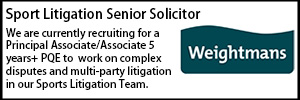
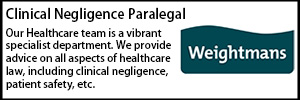
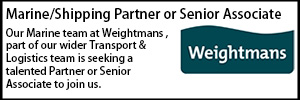
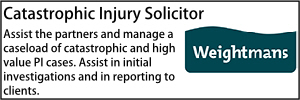

























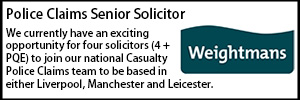
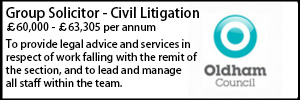






















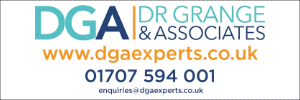




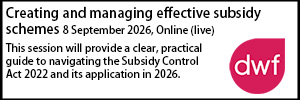

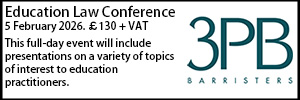


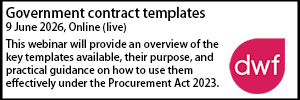
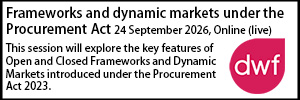
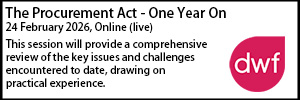




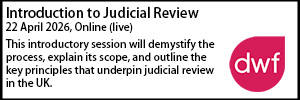





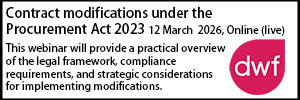


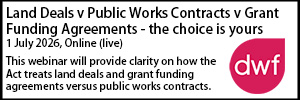

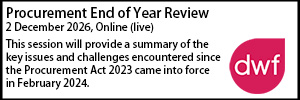
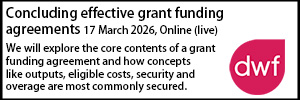






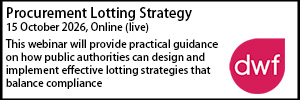
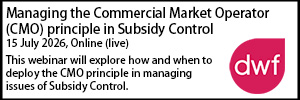




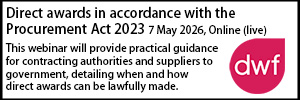
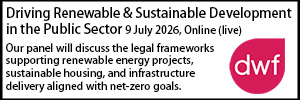





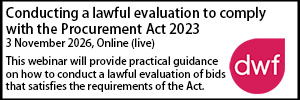

 First Aid Level 3 - LBL Skills
First Aid Level 3 - LBL Skills  Capsticks Housing Diploma
Capsticks Housing Diploma  Standish 18 months on - 42BR
Standish 18 months on - 42BR  Accelerating EV Charging Infrastructure in the Public Sector - DWF
Accelerating EV Charging Infrastructure in the Public Sector - DWF  Building Safety Act Conference 2026 - Landmark Chambers
Building Safety Act Conference 2026 - Landmark Chambers  Education Law Conference - 3PB
Education Law Conference - 3PB  Annual Planning Seminar 2026 - No.5 Barristers
Annual Planning Seminar 2026 - No.5 Barristers 